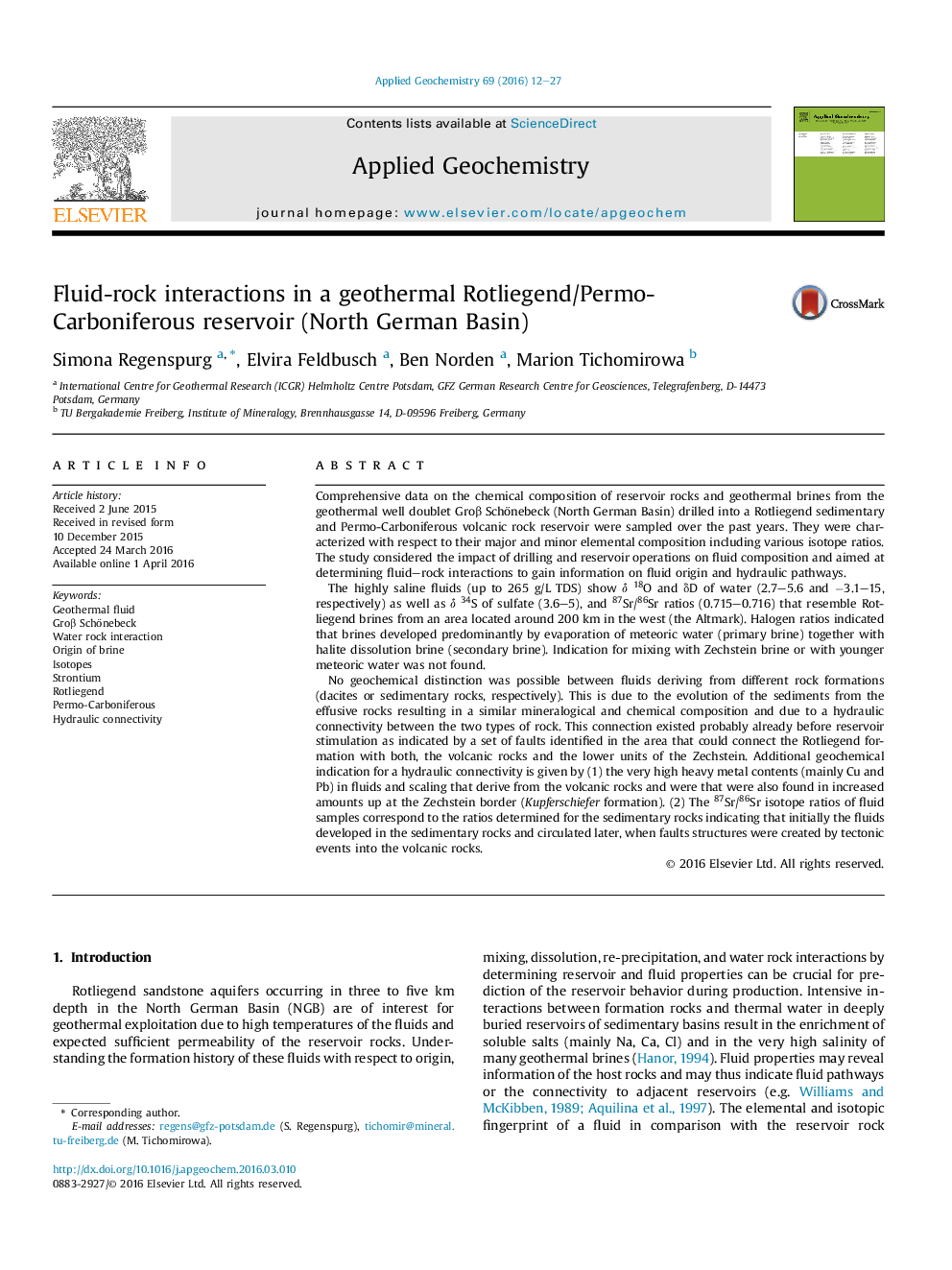| کد مقاله | کد نشریه | سال انتشار | مقاله انگلیسی | نسخه تمام متن |
|---|---|---|---|---|
| 4435577 | 1620222 | 2016 | 16 صفحه PDF | دانلود رایگان |

• Permo-Carboniferous fluids from various depths in Rotliegend and volcanic rocks cannot be differentiated at the site.
• Drilling and wellbore operation have strong effects on fluid composition.
• Groβ Schönebeck geothermal fluid origins from Rotliegend sedimentary rocks.
• The fluid is an evaporation brine mixed with halite dissolution brine.
• Reservoir rocks were most likely hydraulically connected at pre-drilling times.
• Saline Rotliegend fluids mobilized metals from underlying dacitic rocks and transported them along faults up to the border of Zechstein.
Comprehensive data on the chemical composition of reservoir rocks and geothermal brines from the geothermal well doublet Groβ Schönebeck (North German Basin) drilled into a Rotliegend sedimentary and Permo-Carboniferous volcanic rock reservoir were sampled over the past years. They were characterized with respect to their major and minor elemental composition including various isotope ratios. The study considered the impact of drilling and reservoir operations on fluid composition and aimed at determining fluid–rock interactions to gain information on fluid origin and hydraulic pathways.The highly saline fluids (up to 265 g/L TDS) show δ18O and δD of water (2.7–5.6 and −3.1–15, respectively) as well as δ34S of sulfate (3.6–5), and 87Sr/86Sr ratios (0.715–0.716) that resemble Rotliegend brines from an area located around 200 km in the west (the Altmark). Halogen ratios indicated that brines developed predominantly by evaporation of meteoric water (primary brine) together with halite dissolution brine (secondary brine). Indication for mixing with Zechstein brine or with younger meteoric water was not found.No geochemical distinction was possible between fluids deriving from different rock formations (dacites or sedimentary rocks, respectively). This is due to the evolution of the sediments from the effusive rocks resulting in a similar mineralogical and chemical composition and due to a hydraulic connectivity between the two types of rock. This connection existed probably already before reservoir stimulation as indicated by a set of faults identified in the area that could connect the Rotliegend formation with both, the volcanic rocks and the lower units of the Zechstein. Additional geochemical indication for a hydraulic connectivity is given by (1) the very high heavy metal contents (mainly Cu and Pb) in fluids and scaling that derive from the volcanic rocks and were that were also found in increased amounts up at the Zechstein border (Kupferschiefer formation). (2) The 87Sr/86Sr isotope ratios of fluid samples correspond to the ratios determined for the sedimentary rocks indicating that initially the fluids developed in the sedimentary rocks and circulated later, when faults structures were created by tectonic events into the volcanic rocks.
Figure optionsDownload as PowerPoint slide
Journal: Applied Geochemistry - Volume 69, June 2016, Pages 12–27